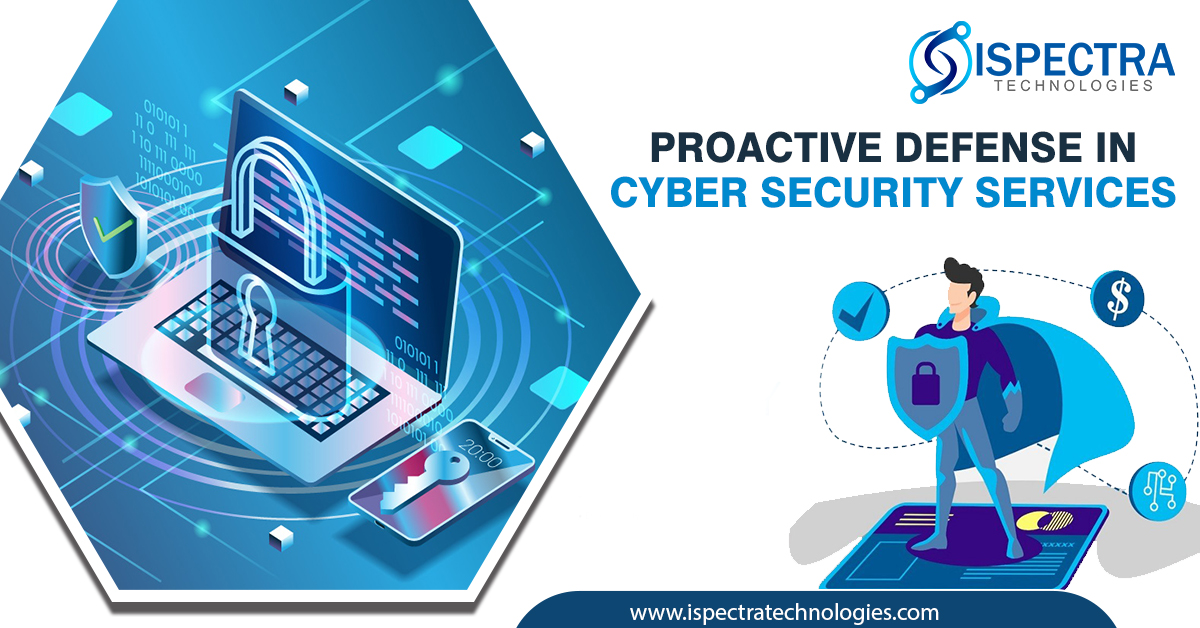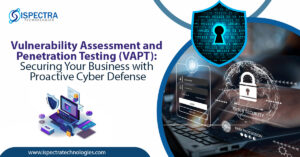Proactive Defense in Cyber Security Services

The cybersecurity community is deeply involved in a constant conflict amongst themselves on the question: “Should organizations primarily adopt proactive or reactive measures in their strategies?”
Well, cybercrime is increasingly impeding businesses and governments on a global scale. It is no longer confined solely to the realm of IT. Instead, it has emerged as the foremost menace to organizational reputation and business continuity. As per studies, 54% of organizations encounter one or more attacks resulting in data or infrastructure compromise.
However, only a handful of them are adequately equipped to address security concerns effectively. Thus, opting for cyber security services and making sure they take the lead in your organizational strategies is essential.
Fortify your Organization with Proactive Cyber Security Defense
The proactive defense allows you to act pre-emptively against threats and reduce the likelihood of cyber security incidents. Proactive cybersecurity services look for threats and identify vulnerabilities within your security infrastructure. Then, it regulates them to avoid escalation into incidents or breaches. It is similar to scouting ahead with binoculars and quickly examining your surroundings for potential risks.
However, several crucial factors must be considered when transitioning to proactive cyber defense. These include:
-
Proactive Defense Stance
A proactive defense approach leverages real-time cyber threat intelligence and automated security testing to understand potential attack paths comprehensively. Cyber services align this analysis with the organization’s core operations. It pinpoints vulnerabilities and remediates them, along with guiding targeted investments to bolster overall security. Thus, Proactive measures, including active prevention, aid in uncovering attack vectors and identifying compromised assets before they escalate into significant threats.
-
Strategic Asset Prioritization
All data that centers within an organization does not hold equal importance. Some of those data are ‘confidential,’ which includes critical assets such as customer data, intellectual property, or trade secrets. Cyber security services identify and delineate these cyber risk centers as proactive risk management. This enables focused attention on potential vulnerabilities that could significantly impact the organization.
-
Continuous Simulation of Attack Scenarios
Effective simulation of potential attack paths requires in-depth knowledge of the enterprise environment, human factors, and critical vulnerabilities. Cyber-attack simulation software plays a pivotal role in this process by replicating breach and attack scenarios. To optimize effectiveness, organizations must simulate attack patterns employed by threat actors, enabling the swift implementation of countermeasures to mitigate emerging risks.
Proactive Cybersecurity: The Key to Comprehensive Protection
Enhancing your proactive cybersecurity measures can significantly improve your capability to thwart threats.
Here are a few advantages of active pre-emptively:
- Regain Command: Taking proactive steps to evaluate risks allows you to take full control of your cybersecurity approach. This enables you to decide which issues warrant prioritization and the precise actions required to address vulnerabilities.
- Deter Threats: Statistics indicate that proactive risk management effectively deters cyberattacks. A robust cybersecurity strategy includes both proactive and reactive measures working together. These measures can quickly identify weaknesses and prepare for probable threats in advance. So you can respond swiftly and decisively when detecting an attack.
- Stay Ahead of Risks: Due to the rapid evolution of cyber threats, it is essential to have a highly adaptable cybersecurity strategy. It allows the organization to reduce the risk of monitoring emerging threats and always be prepared for the latest risks. A proactive cybersecurity approach ensures ongoing awareness of emerging cybercrime developments and facilitates concrete preventive actions.
- Continuously Enhance: Proactive risk management leads to an ongoing improvement in security measures. In the absence of proactive measures, your strategy is susceptible to stagnation. Once this occurs, it is swiftly active before an unforeseen threat emerges, exposing your vulnerabilities. Don’t wait for an attack to expose your weaknesses. You can proactively identify and rectify them before they can be exploited.
- Ensure Regulatory Compliance: Sticking to security regulations often becomes complex if you lack an understanding of the organization’s risk profile. A proactive security approach emphasizes cybersecurity risk assessments and implementing best practices to mitigate these risks. Thus, you can confidently navigate compliance audits by investing in understanding your security posture.
- Enhance Customer Trust: Building and preserving customer trust is essential for every business. However, a data breach can quickly undermine this trust that has been diligently established. A proactive security strategy serves as your primary defense against such catastrophic outcomes. Moreover, demonstrating your commitment to preemptively safeguarding customer data further strengthens trust and loyalty.
Wrapping Up!
Considering the increasing threat environment, organizations must take a step forward toward proactive strategies to mitigate risks effectively. While proactive measures aim to reduce vulnerabilities, reactive responses remain essential for swiftly addressing breaches. The synergy of both approaches sets a higher barrier for hackers, making it more challenging for them to compromise systems.
You can hire reputed cyber security services and integrate proactive cyber risk management into your business’s e-security strategy. It will provide invaluable benefits in navigating the dynamic cybersecurity landscape and securing your trade secrets.










